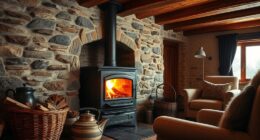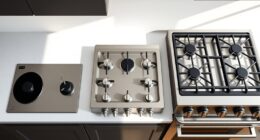As a passionate fan of heat-blowing devices, I am here to explain how these clever tools work when used with wood stoves.
Wondering how they work? Allow me to demystify the science behind heat circulation and introduce you to the different types of heat fans available.
Discover the benefits of using a heat fan and learn some valuable tips for maximizing its performance.
Get ready to embrace a warmer and cozier home with the power of a heat fan.
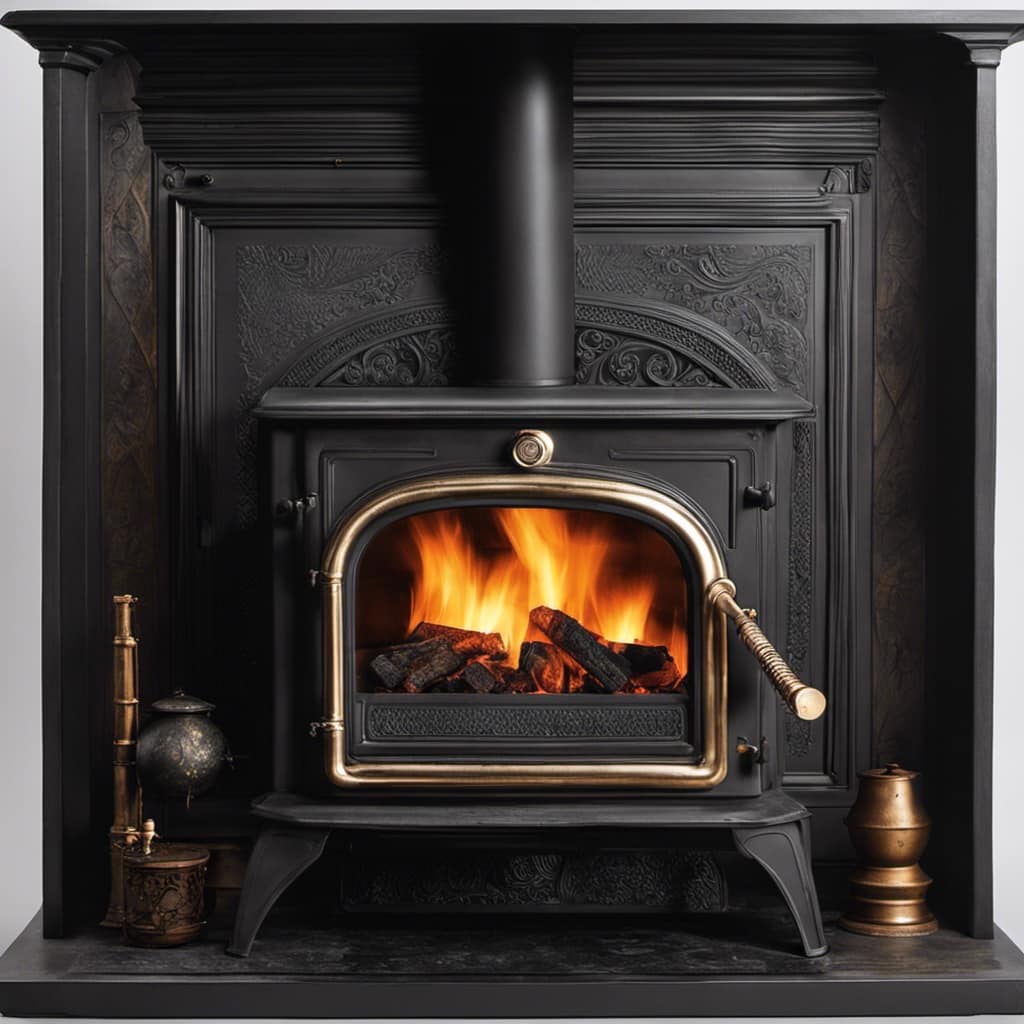
Key Takeaways
- Heat fans are essential for wood stoves as they distribute warmth efficiently.
- Heat fans generate electricity from the heat of the stove to power the fan blades.
- Heat fans increase the overall efficiency of wood stoves by quickly circulating warm air throughout the space.
- Regularly cleaning and maintaining the heat fan ensures efficient operation and longevity.
Understanding the Basics of Heat Fans
I really enjoy learning about the basics of heat fans and how they work. Heat fans are an essential component of wood stoves as they help to distribute warmth efficiently.
The heating mechanism of these fans is quite fascinating. They operate using the principle of thermoelectricity, where the temperature difference between the stove and the fan creates an electric current. This current powers the fan, causing it to rotate and push the warm air into the room.
It’s a simple yet effective way to maximize heat distribution and ensure that every corner of the room receives the warmth generated by the wood stove. Understanding the basics of heat fans allows us to appreciate their role in enhancing the efficiency and comfort of wood stove heating systems.
The Science Behind Heat Circulation
The thermodynamics of heat circulation in wood stoves is a fascinating field of study. Understanding the heat flow dynamics and thermal convection is crucial for optimizing the efficiency of these heating appliances. Here are four key aspects to consider:
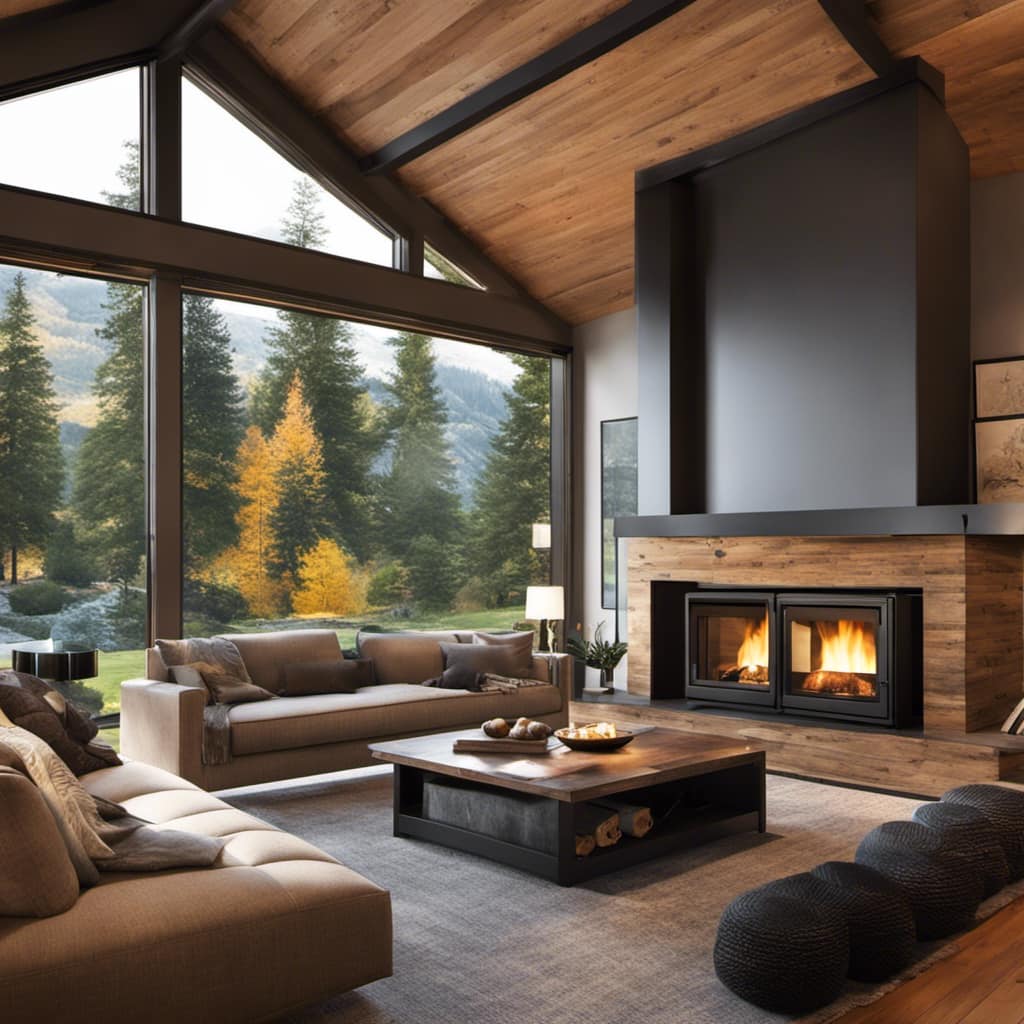
-
Heat Transfer: Wood stoves operate by burning wood, which produces heat. This heat is transferred to the surrounding air through conduction and radiation.
-
Thermal Convection: As the air near the stove becomes heated, it rises due to its lower density, creating a convection current. This upward movement of hot air allows for the circulation of heat throughout the room.
-
Airflow Control: Adjusting the airflow in the stove can impact the rate of heat circulation. Increasing the airflow promotes faster convection, while reducing it slows down the process.
-
Heat Distribution: The design of the wood stove, including the location of vents and baffles, influences how effectively heat is distributed in the space.
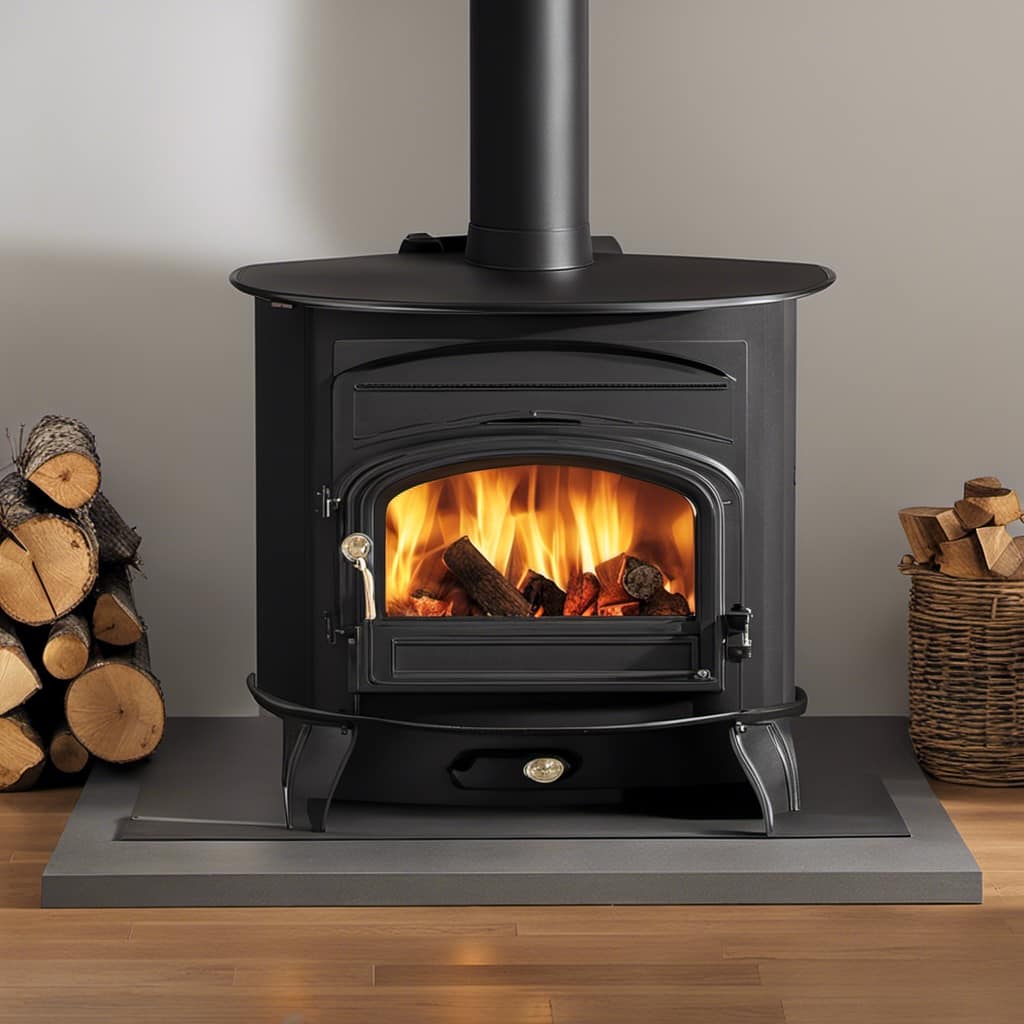
Understanding the science behind heat circulation in wood stoves sets the stage for exploring the different types of heat fans that can further enhance the warmth and comfort in your home.
Types of Heat Fans for Wood Stoves
Using a heat fan is a great way to maximize the heat circulation from your wood stove. Heat fans, also known as stove fans or heat-powered fans, are designed to distribute the warm air produced by your wood stove more efficiently throughout the room.
These fans operate by using the heat from the stove to generate electricity, which powers the fan blades. This process helps to push the warm air away from the stove and into the room, providing a more even distribution of heat.
When it comes to the effectiveness of heat fans, they can significantly improve the warmth and comfort in your space. However, it’s important to consider the noise levels of heat fans. While some models are designed to operate quietly, others may produce more noise, which can be a concern for some individuals.
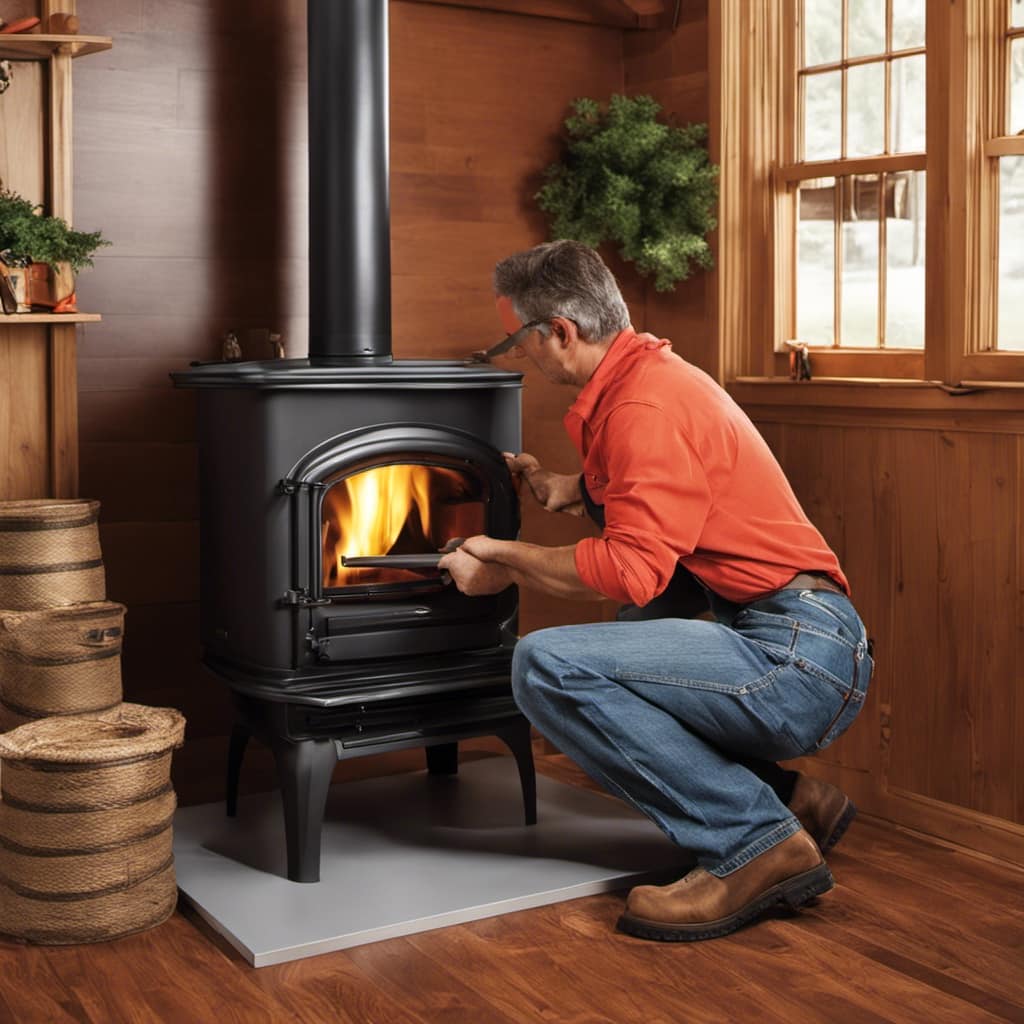
It’s advisable to check the noise ratings of different heat fans before making a purchase, to ensure it aligns with your preferences.
Benefits of Using a Heat Fan
A heat fan can greatly enhance the warmth and comfort of your space, while also efficiently circulating the heat from your wood stove. Here are four benefits of using a heat fan:
-
Increased Efficiency: By using a heat fan, you can improve the overall efficiency of your wood stove. The fan helps to distribute the heat more evenly throughout the room, allowing you to maximize the warmth generated by your stove.
-
Faster Heat Distribution: With a heat fan, the warm air produced by your wood stove is quickly circulated throughout the space. This means that you won’t have to wait long for the room to heat up, providing you with immediate comfort.

-
Improved Air Circulation: The fan helps to promote better air circulation in the room, preventing any stagnant pockets of cold air. This ensures that every corner of the space receives the warmth from the wood stove, creating a cozy and inviting atmosphere.
-
Reduced Energy Consumption: By using a heat fan, you can reduce the amount of wood or fuel needed to heat your space. The fan helps to distribute the heat more effectively, allowing you to achieve the desired temperature with less effort.
In order to optimize the performance of your heat fan, there are a few tips you can follow.
Tips for Optimizing Heat Fan Performance
I can provide some helpful tips to optimize your heat fan performance.

Proper heat fan maintenance is crucial to ensure its efficient operation and longevity. One common issue with heat fans is the lack of airflow, which can be caused by a buildup of dust and debris.
Regularly cleaning the fan blades and the surrounding area can help improve airflow and prevent overheating.
Additionally, troubleshooting heat fan issues can involve checking the fan motor for any signs of wear or damage, ensuring that the fan is receiving enough power, and inspecting the fan belt for any signs of wear or looseness.
Frequently Asked Questions
How Much Electricity Does a Heat Fan for a Wood Stove Consume?
The electricity consumption of a heat fan for a wood stove depends on its size and speed settings. These fans are compatible with various stove types and help circulate warm air throughout the room efficiently.
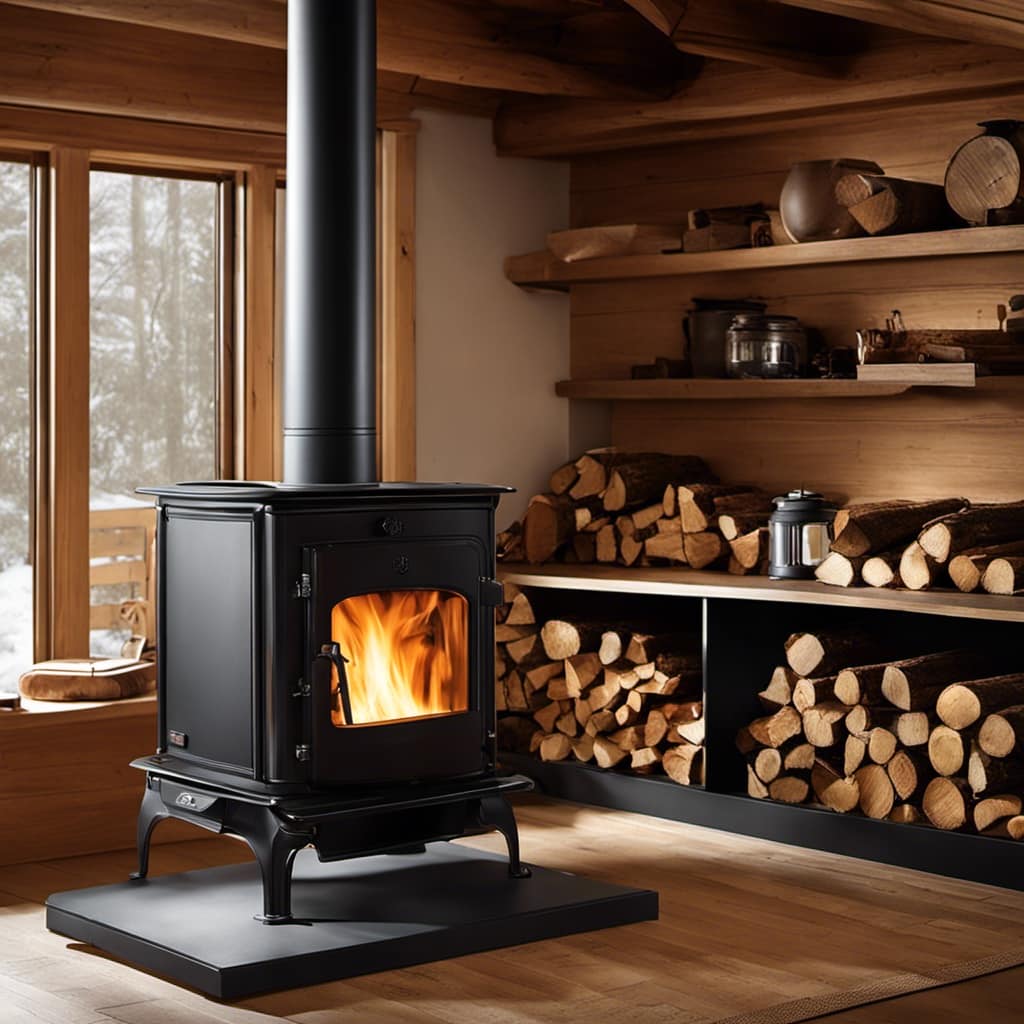
Can a Heat Fan Be Used With Any Type of Wood Stove?
Yes, a heat fan can be used with any type of wood stove. It is compatible and offers several benefits such as improved heat distribution, increased efficiency, and quicker warmth throughout the room.
Is It Safe to Leave a Heat Fan Running Unattended?
Leaving a heat fan running unattended can pose risks, such as overheating and potential fire hazards. To maximize efficiency and lifespan, it is important to follow manufacturer’s instructions, regularly clean the fan, and ensure proper ventilation.
Can a Heat Fan Be Used in a Small Room or Only in Larger Spaces?
Certainly! A heat fan for a wood stove can be used in both small rooms and larger spaces. It improves heating efficiency by distributing the warm air more effectively.
Are There Any Maintenance Tasks Required for a Heat Fan?
There are a few maintenance tasks required for proper heat fan operation. Regular dusting and cleaning of the fan blades and motor, as well as checking for any loose parts or abnormal noises, are essential.

Conclusion
In conclusion, heat fans for wood stoves are a great addition to any home heating system. They effectively circulate warm air throughout the room, increasing the overall heat distribution and maximizing the stove’s efficiency.
One interesting statistic to note is that heat fans can increase the heat output of a wood stove by up to 50%, providing a significant boost in warmth during the colder months.
By incorporating a heat fan into your wood stove setup, you can enjoy a more comfortable and cozy living space.
Growing up surrounded by the vast beauty of nature, Sierra was always drawn to the call of the wild. While others sought the comfort of the familiar, she ventured out, embracing the unpredictable and finding stories in the heartbeat of nature.
At the epicenter of every remarkable venture lies a dynamic team—a fusion of diverse talents, visions, and passions. The essence of Best Small Wood Stoves is crafted and refined by such a trio: Sierra, Logan, and Terra. Their collective expertise has transformed the platform into a leading authority on small wood stoves, radiating warmth and knowledge in equal measure.










